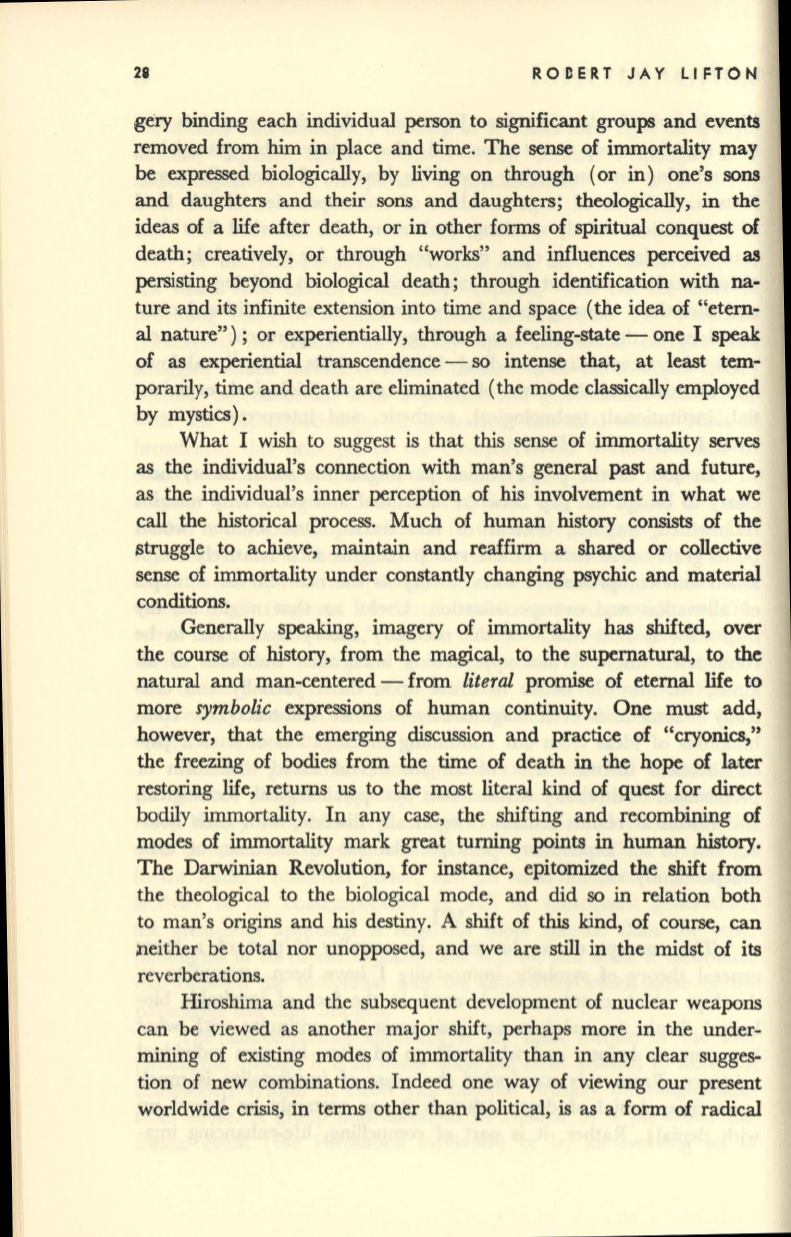
21
ROCERT JAY LIFTON
gery binding each individual person to significant groups and events
removed from him in place and time. The sense of immortality may
be expressed biologically, by living on through (or in) one's sons
and daughters and their sons and daughters; theologically, in the
ideas of a life after death, or in other forms of spiritual conquest of
death; creatively, or through "works" and influences perceived as
persisting beyond biological death; through identification with na–
ture and its infinite extension into time and space (the idea of "etern–
al nature"); or experientially, through a feeling-state - one I speak
of as experiential transcendence - so intense that, at least tem–
porarily, time and death are eliminated (the mode classically employed
by mystics).
What I wish to suggest is that this sense of immortality serves
as the individual's connection with man's general past and future,
as the individual's inner perception of his involvement in what we
call the historical process. Much of human history consists of the
struggle to achieve, maintain and reaffirm a shared or collective
sense of immortality under constantly changing psychic and material
conditions.
Generally speaking, imagery of immortality has shifted, over
the course of history, from the magical, to the supernatural, to the
natural and man-centered - from
literal
promise of eternal life to
more
symbolic
expressions of human continuity. One must add,
however, that the emerging discussion and practice of "cryonics,"
the freezing of bodies from the time of death in the hope of later
restoring life, returns us to the most literal kind of quest for direct
bodily immortality. In any case, the shifting and recombining of
modes of immortality mark great turning points in human
history.
The Darwinian Revolution, for instance, epitomized the shift from
the theological to the biological mode, and did so in relation both
to man's origins and his destiny. A shift of
this
kind, of course, can
neither be total nor unopposed, and we are still in the midst of its
reverberations.
Hiroshima and the subsequent development of nuclear weapons
can be viewed as another major shift, perhaps more in the under–
mining of existing modes of immortality than in any clear sugges–
tion of new combinations. Indeed one way of viewing our present
worldwide crisis, in terms other than political, is as a form of radical


